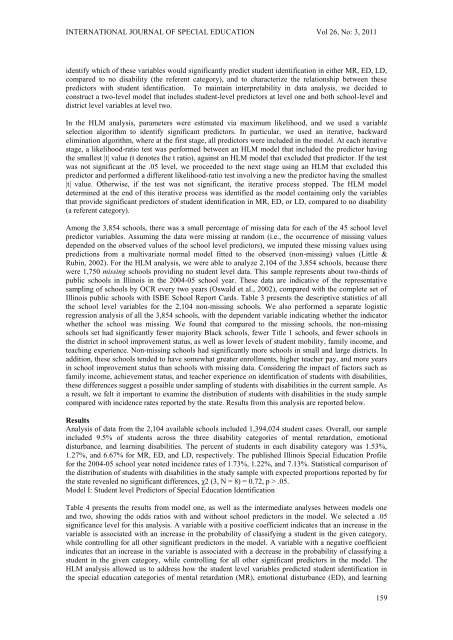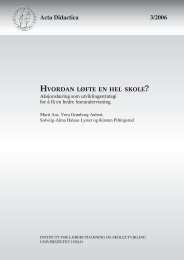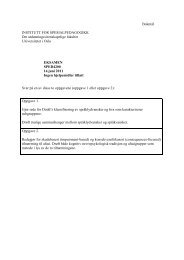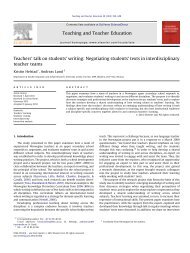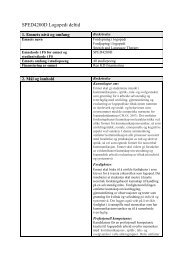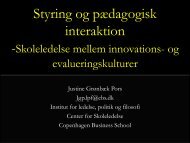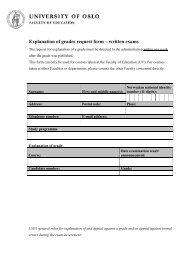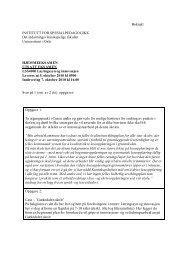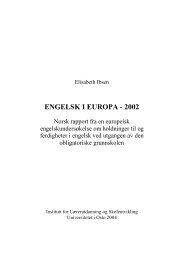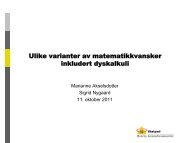International Journal Special Education
International Journal Special Education
International Journal Special Education
Create successful ePaper yourself
Turn your PDF publications into a flip-book with our unique Google optimized e-Paper software.
INTERNATIONAL JOURNAL OF SPECIAL EDUCATION Vol 26, No: 3, 2011identify which of these variables would significantly predict student identification in either MR, ED, LD,compared to no disability (the referent category), and to characterize the relationship between thesepredictors with student identification. To maintain interpretability in data analysis, we decided toconstruct a two-level model that includes student-level predictors at level one and both school-level anddistrict level variables at level two.In the HLM analysis, parameters were estimated via maximum likelihood, and we used a variableselection algorithm to identify significant predictors. In particular, we used an iterative, backwardelimination algorithm, where at the first stage, all predictors were included in the model. At each iterativestage, a likelihood-ratio test was performed between an HLM model that included the predictor havingthe smallest |t| value (t denotes the t ratio), against an HLM model that excluded that predictor. If the testwas not significant at the .05 level, we proceeded to the next stage using an HLM that excluded thispredictor and performed a different likelihood-ratio test involving a new the predictor having the smallest|t| value. Otherwise, if the test was not significant, the iterative process stopped. The HLM modeldetermined at the end of this iterative process was identified as the model containing only the variablesthat provide significant predictors of student identification in MR, ED, or LD, compared to no disability(a referent category).Among the 3,854 schools, there was a small percentage of missing data for each of the 45 school levelpredictor variables. Assuming the data were missing at random (i.e., the occurrence of missing valuesdepended on the observed values of the school level predictors), we imputed these missing values usingpredictions from a multivariate normal model fitted to the observed (non-missing) values (Little &Rubin, 2002). For the HLM analysis, we were able to analyze 2,104 of the 3,854 schools, because therewere 1,750 missing schools providing no student level data. This sample represents about two-thirds ofpublic schools in Illinois in the 2004-05 school year. These data are indicative of the representativesampling of schools by OCR every two years (Oswald et al., 2002), compared with the complete set ofIllinois public schools with ISBE School Report Cards. Table 3 presents the descriptive statistics of allthe school level variables for the 2,104 non-missing schools. We also performed a separate logisticregression analysis of all the 3,854 schools, with the dependent variable indicating whether the indicatorwhether the school was missing. We found that compared to the missing schools, the non-missingschools set had significantly fewer majority Black schools, fewer Title 1 schools, and fewer schools inthe district in school improvement status, as well as lower levels of student mobility, family income, andteaching experience. Non-missing schools had significantly more schools in small and large districts. Inaddition, these schools tended to have somewhat greater enrollments, higher teacher pay, and more yearsin school improvement status than schools with missing data. Considering the impact of factors such asfamily income, achievement status, and teacher experience on identification of students with disabilities,these differences suggest a possible under sampling of students with disabilities in the current sample. Asa result, we felt it important to examine the distribution of students with disabilities in the study samplecompared with incidence rates reported by the state. Results from this analysis are reported below.ResultsAnalysis of data from the 2,104 available schools included 1,394,024 student cases. Overall, our sampleincluded 9.5% of students across the three disability categories of mental retardation, emotionaldisturbance, and learning disabilities. The percent of students in each disability category was 1.53%,1.27%, and 6.67% for MR, ED, and LD, respectively. The published Illinois <strong>Special</strong> <strong>Education</strong> Profilefor the 2004-05 school year noted incidence rates of 1.73%, 1.22%, and 7.13%. Statistical comparison ofthe distribution of students with disabilities in the study sample with expected proportions reported by forthe state revealed no significant differences, χ2 (3, N = 8) = 0.72, p > .05.Model I: Student level Predictors of <strong>Special</strong> <strong>Education</strong> IdentificationTable 4 presents the results from model one, as well as the intermediate analyses between models oneand two, showing the odds ratios with and without school predictors in the model. We selected a .05significance level for this analysis. A variable with a positive coefficient indicates that an increase in thevariable is associated with an increase in the probability of classifying a student in the given category,while controlling for all other significant predictors in the model. A variable with a negative coefficientindicates that an increase in the variable is associated with a decrease in the probability of classifying astudent in the given category, while controlling for all other significant predictors in the model. TheHLM analysis allowed us to address how the student level variables predicted student identification inthe special education categories of mental retardation (MR), emotional disturbance (ED), and learning159


